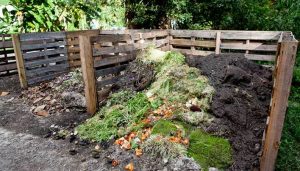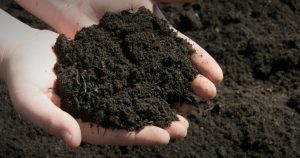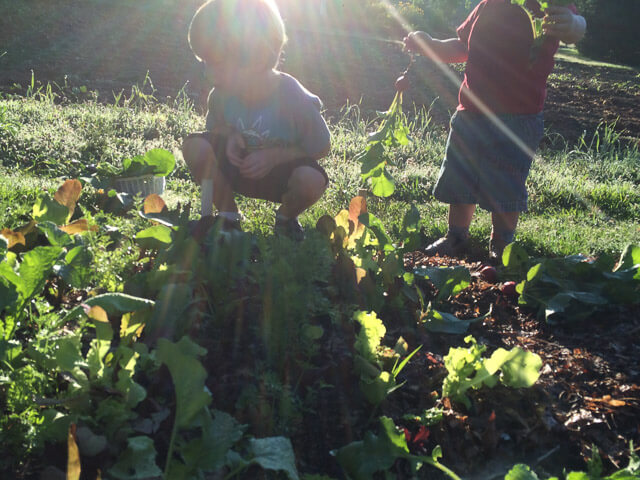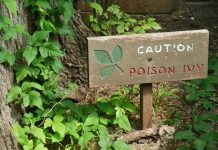Grow Your Soil First and the Garden Will Grow Itself
How do you grow your soil? What does that mean, “grow your soil?” Plants live only from what they can get from the soil and the water they either get from the sky or the irrigation you provide. A tomato is about 95% water. What is the other 5%? It’s the components in the soil that the plant has drawn out molecule-by-molecule. If the “building blocks” of that tomato are not (#1) present in the soil and (#2) are not bioavailable to the plant’s roots, the tomato will not form correctly (PERIOD and END OF SENTENCE).
The summer is over, fall is well underway, and winter is knocking, knock, knocking at our door. Most of us are thinking “turkey” and “Black Friday” and few of us are thinking “spring” and fewer of us are thinking “compost.” But those are the two things you need to be thinking of to get the spring garden you really want. Let’s think about this:
Today is the day after Thanksgiving and there are plenty of advertisements for all kinds of stuff. I am at home avoiding all the crowds out there buying hundred-dollar hats for their nickel heads. The holiday season advertisement revolves around to buy, buy, buy and eat, eat, eat. What are you not seeing? Weight loss advertising. Sure, there’s an ad or two about how to lose your flabby booty (not you but people I know), but they are few and far between. What will happen in March? Folks will have shifted from the holiday food feasts to weight loss and try (again)…in vain…to get that awesome beach body for their June beach getaway. I am sorry to say, March will be too late. When is the time to start planning for next June’s beach body? It was LAST JUNE! It takes time to lose weight and perfect your flabby booty. Let’s just be honest.
Related: Post Apocalypse Gardening: Living From a Small Piece of Land in Tough Conditions
Composting and building soil takes time. If you wait until March or April to compost, mulch and amend your garden soil, you will end up having to play catch up. You’ll end up doing all the steps you feel are necessary to get the spring garden ready only to be disappointed in August when your harvest was pitiful, to say the least. Your plants suffered NOT because of (#1); the nutrients are present in your soil. Where you “missed the boat” was (#2); there was not enough time for those nutrients to break down and become bioavailable to the plant’s roots.


First thing’s first. Start composting. When you think you have enough, get some more. According to the Louisiana Department of Environmental Quality, your home compost pile will shrink to approximately half its original volume by the time the decomposition process is finished. My experience says that only about 33% will remain. The components are still there (for the most part) but they have compacted as the airspace within the compost pile is reduced because the supporting structures (grass, leaves, poop) all began to break down and “mingle” closer together.
If you don’t have compost, buy some! This is both easier and harder than making your own compost. Let me explain: The “Forest Compost” I get from my local nursery is about $50 a yard. The berry beds that I am making right now (see the video) take about 3-4 yards each. The problem with that compost is the volume of sand and other additives they add to the compost to “bulk” it up. When the organic matter is gone…what’s left…talk about a soil that will pack and crust-over. So, to avoid that, you need to add other components. We use Mel Bartholomew’s recipe from his book “All New Square Foot Gardening.”
1/3 Compost
1/3 Peat Moss (or Coconut Coir)
1/3 Perlite (in lieu of Vermiculite)
We use Perlite instead of Vermiculite because of our homestead’s soil is clay. Though Mel Bartholomew’s intention with this soil mixture is to use the three-part mixture instead of soil, we till the three right into the soil we have. Clay soil sometimes is LOADED with nutrients that have been locked in since the beginning of time (give or take a thousand years).
Related: Where to Find Seeds if it’s Off the Shelves Right Now
Rationales:
According to The Vermiculite Association, Vermiculite benefits the soil by improving soil aeration while retaining moisture and nutrients to feed roots, cuttings and seeds for faster, maximum growth.


According to PowerHouse Hydroponics, perlite offers both excellent water retention and drainage capabilities.
We need a bit more drainage in our soil (not to mention: perlite is usually cheaper to buy). Using these three components and tilled into the existing soil, we have performed the initial steps in preparing for the spring garden. Then again, we could have just waited until the spring, right? Don’t forget #2: Bioavailability. The peat moss and much of the compost is NOT soil…yet. It takes time for these components to break down to the point where their original molecular components have broken their cellular bonds and are no longer a pile of rotting pieces and parts but a layer of deep, non-identifiable micro and macronutrients that are bioavailable to the plants.
In a nutshell: Get Started TODAY!! Grow Your Soil! Hey, the benefits will be 1) The job is done and there’s more time to enjoy the spring months. 2) The compost and mulch materials will have broken down farther and the nutrients will be to the seedlings you plant in the spring and…maybe…just maybe…this extra effort here around the holidays will get you started on the right track to lose that flabby booty (not you but people I know).





















